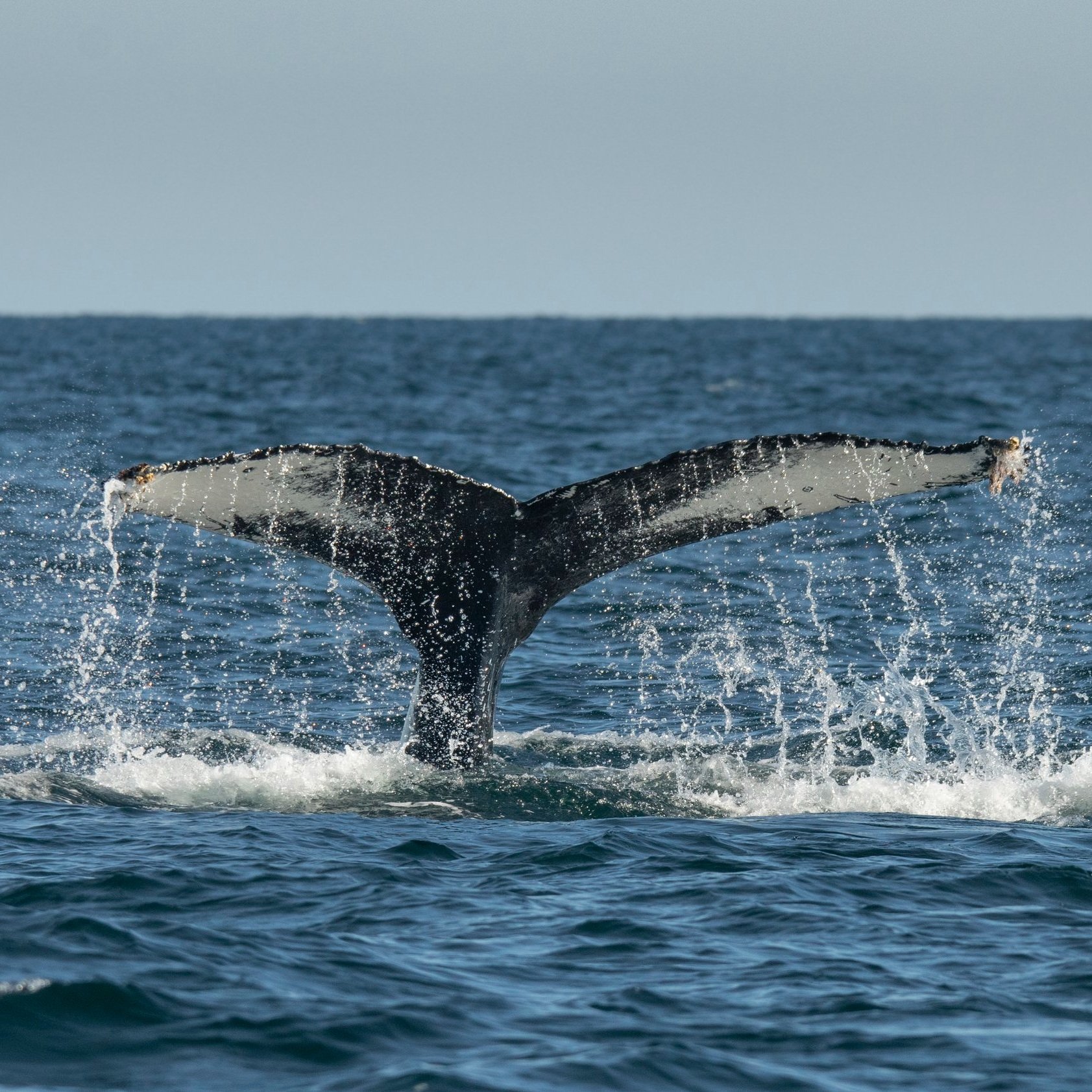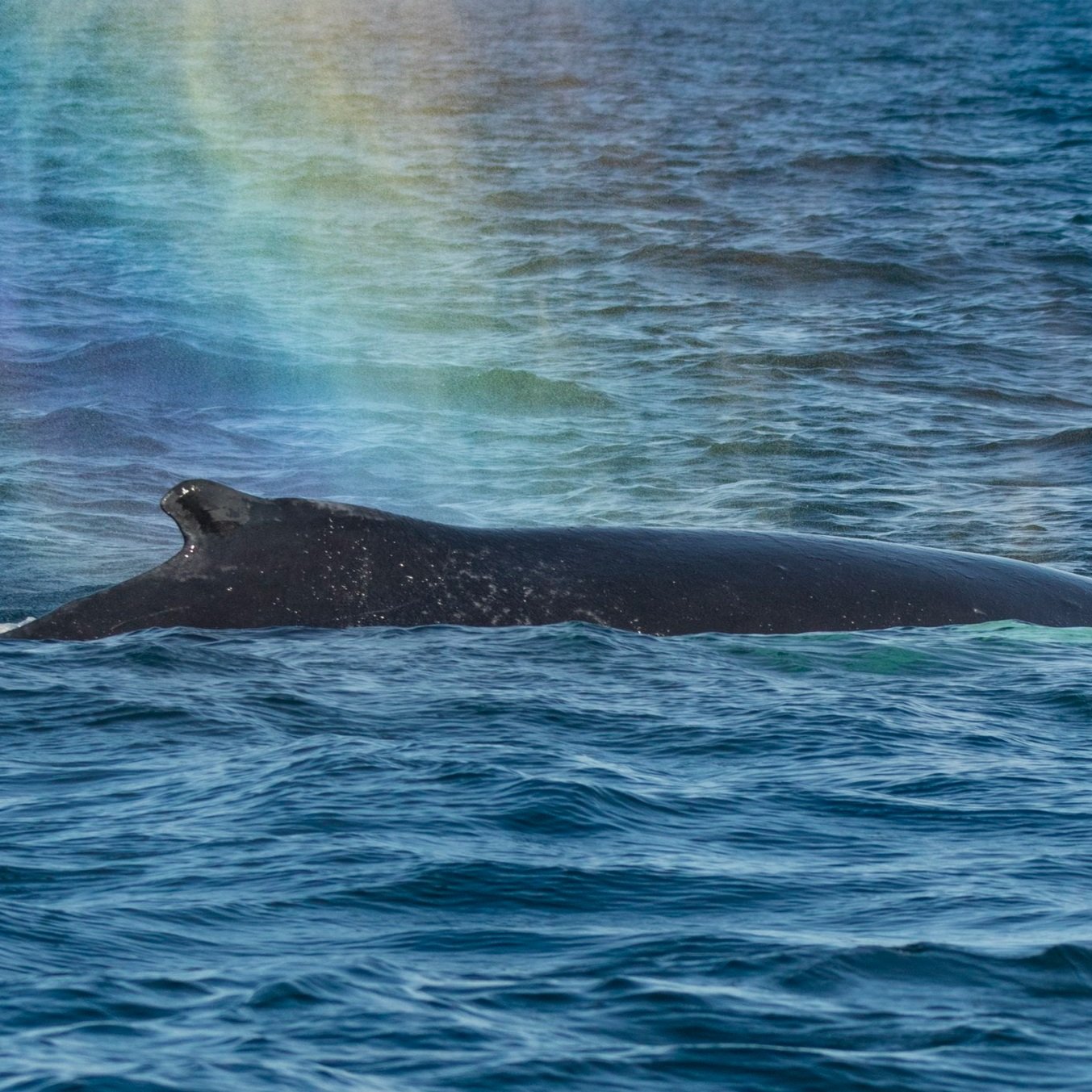100th Humpback Recorded in Scottish Waters
'Barrett' aka 'Humpie B' - the 100th humpback catalogued in Scotland
© Rosie Barrett
Although rare, humpback whales are now being sighted with increasing regularity in Scottish waters - with the hundredth whale documented and added to the Scottish Humpback Catalogue this year.
Humpbacks are known to migrate through Scottish waters between their feeding and breeding grounds. Much of what we know about these magnificent creatures has come from enthusiastic members of the public - or citizen scientists - reporting what they’ve spotted and using a technique called Photo-ID to identify whales, building a better understanding of their movements. Lyndsay Mcneill is one of these wonderful citizen scientists, below she shares her inspiring story and how you can get involved.
Humpback whales had always been my favourite cetacean, I thought I would have to travel to Norway or Iceland to see one. In January 2017, I saw in the local newspaper that there had been a humpback seen in the Firth of Forth. I couldn’t believe it and didn’t head out to spot the whale as I thought it would be gone. A few days later it was seen again - this time my sister and I headed through and got to see it for ourselves!
That was my first sighting of a humpback, the previous year we had been lucky to see orca at Duncansby head and dolphins in Dunbar, I would never have guessed that there would be so many different species off the Scottish coasts!
‘‘Barrett’ the humpback whale, photographed by Rosie Barrett (and named after her) while working on board Hebridean Whale Cruises in September
© Rosie Barrett
A few days from the initial sighting, after meeting a couple from Fife - who we are still great friends with to this day - we observed the humpback breaching. It was quite a sight and I felt very lucky. Still to this day I can’t believe what we saw; breaching, pectoral fin slapping and tail lobbing for at least 25 minutes! That was the start of the humpbacks seemingly appearing annually in the Forth - we hope to see another this winter coming. Winter for most can be a hard time with not many daylight hours, I dreaded winter, now I can’t wait for it to come around and see if we will get another whale.
I wanted to find out where the whales were coming from and where they headed after leaving our shores, so started gathering fluke photos from local photographers. After scrolling through social media, I made the first ever UK match to Arctic feeding grounds! Vyking was the whale and had been seen in Svalbard the previous year. My mind was blown, and I was now obsessed with finding more matches. I kept on looking through other catalogues and online to see if we could find more about the whales we were seeing and where they spent their time when not off our coasts. In August this year, we had a humpback arrive off St Cyrus who turned out to be a familiar tail, also frequenting the Aberdeen in 2016 and Moray Firth area in 2017 - it’s amazing to see the same animals return.
Rosie Barrett
I'm a wildlife photographer from Essex and I've been travelling to Scotland for many years seeking out the amazing wildlife on land and in the sea. When I got offered a job with Hebridean Whale Cruises this year, I jumped at the opportunity, and I am so grateful for the incredible encounters I had. We saw so many humpbacks and fin whales this year which is such an amazing thing to see in large numbers in Scottish waters.
With humpback whales being my favourites, I cannot express the excitement to have had the 100th whale in the Scottish Humpback ID Catalogue named after me. I originally saw this whale with my colleague Steve Truluck on the 10th September and when we sent the images to the lovely Lyndsay, she told us it was a new whale in the catalogue. 2 weeks later, I was with my colleague and owner of HWC Veerle, where we saw this whale again, I instantly recognised the tail and matched it. I then had the opportunity to have it named after me 'Barrett' aka 'Humpie B'.
Every tail fluke is as unique as a human fingerprint and is used to identify the different whales. Photographs are used in a technique called ‘Photo-ID’ - when a whale is identified in a specific location, we can look and see where else that whale has been photographed and build a better picture of their movements. Tail flukes are commonly used to identify humpbacks, but sometimes good dorsal fin images can be used too. Barney - a whale which has visited both the east and west coasts of Scotland - has a very distinctive dorsal fin.
So far, we have matched humpback whales spotted in Scottish waters to the Netherlands, Cape Verde, Caribbean, Iceland, Norway and Ireland.
This year the 100th humpback (what an unbelievable milestone) was added to the catalogue, alongside identifying 25 individuals while matching them to the catalogue - including re-sightings in the UK and internationally.
This work has been enabled by a great network of citizen scientists working together - from people sending in photos, posting sightings and all of the great regional groups around our coasts getting involved in helping better understand these animals.
The Scottish Humpback Catalogue is online and available for anyone to check their photos against - please let us know if you make a match. If you have any photos of humpbacks we would love if you would send them to Lyndsaymcneill@icloud.com. We also have a Scottish Humpback ID Facebook page and encourage everyone to join and share their encounters.
Whale watching (a lot of the time not spotting any fins) is my therapy and you never know what you could see, humpback sightings are on the rise around our coasts, and you never know where you might see one or other whales and dolphins. A pair of binoculars is all you need to start out!




